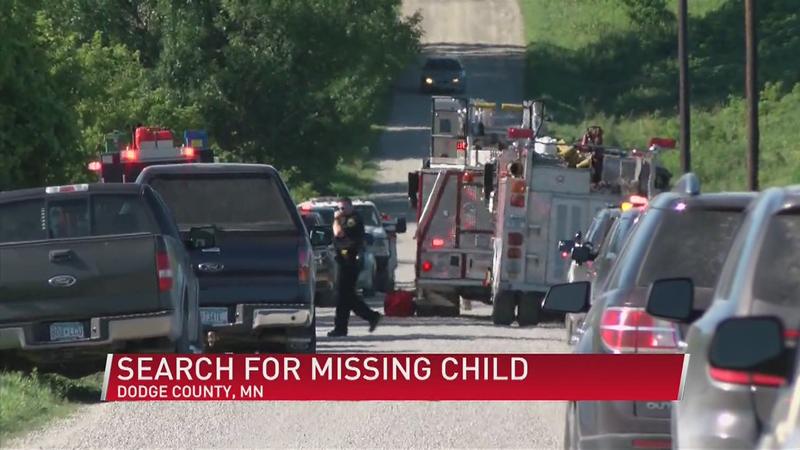
Protecting Your Child from Predators
 How easy would it be to kidnap a child in a crowded place? Maybe the park, walking home from school or even sleeping in their own bedroom. Over again, we see parents of missing children making pleas for the safe return of their children on the news. We see the Amber Alerts and Facebook posts and immediately picture our own children’s faces, thinking “What if it happened to me?” A common reaction to something so traumatic.
How easy would it be to kidnap a child in a crowded place? Maybe the park, walking home from school or even sleeping in their own bedroom. Over again, we see parents of missing children making pleas for the safe return of their children on the news. We see the Amber Alerts and Facebook posts and immediately picture our own children’s faces, thinking “What if it happened to me?” A common reaction to something so traumatic.
A young child becoming the victim of a predator is every parent’s worst nightmare, but the fact is, it is happening every day to parents throughout the country and our own fears do not wane just because our children are getting older.
I am a parent of four grown children and a mother who has worked in the field of missing persons for over 25 years. Every day I interacted with parents who were desperately searching for their missing child. Their pain unimaginable. Very quickly I realized the crime of abduction does not discriminate based upon a child’s age.
Commonly, we think of small children when we hear the word kidnapping and we think as our children age, they are safer, but the fact is, they can become even more vulnerable as they approach adulthood.
While teenagers are venturing out, without the protective eye of a parent, there is even more chance they can cross paths with a potential kidnapper. It is our responsibility as parents to guide our children throughout their lives and hopefully provide them with some tools that will keep them safe.
According to the National Center for Missing & Exploited Children (NCMEC), approximately 800,000 children are reported missing each year in the United States. That number accounts for nearly 2,000 per day.
The Federal Bureau of Investigation (FBI) estimates a relatively small number, approximately 115 of those missing children are abducted by strangers and listed as an “involuntary” abduction in the national database of missing children. However, this number does not account for children (to include teens), who are listed in the FBI National Crime Information Center (NCIC) in various categories such as “Endangered Missing,” “Runaways” or “Other.” Many of these disappearances are considered “long-term” with more than a year having passed with no resolution or explanation as to how or why the child disappeared. The fact is, we just don’t know, therefor accurate statistics impossible.
One thing we all can do as parents is prepare our children. Much of the following information and tools have proven to save lives.
- Communicate with your children
Predators do not look like the “Boogieman.” Strangers look like everyone else. Children need to understand that everyone is a stranger, even women and seniors. It is not about being unsociable, explaining this is about being cautious.
- Agree to a code word
Strangers have no business asking a child for directions or a lost pet. Many times, a predator will try to coerce a child into coming with them voluntarily without causing a scene by telling them they were sent by their parents to pick the child up. Agree to a simple “code word” like “Giraffe” or “Cheetos” that your child can remember and tell them to only trust an adult who knows the code word.
- Walking Away
Children should be taught to trust their instincts and walk away if a stranger approaches them. Though not all people are dangerous, it is always more important to be safe than being polite.
- Don’t put your child’s name on personal items
Children will tend to trust others who know their name. Never put your child’s name on personal items such as clothing or backpacks.
- Just scream
If approached, children should be taught to scream and run. Reassure your child the likelihood of being approached by a stranger is minimal but should it happen, to scream “This is not my dad” or “Fire” while running away.
 The stakes are high when a child becomes the target of a predator. It really is a matter of life or death. According to the FBI, statistically when a child is abducted by a stranger, the likelihood of recovering them alive diminishes with each hour that passes.
The stakes are high when a child becomes the target of a predator. It really is a matter of life or death. According to the FBI, statistically when a child is abducted by a stranger, the likelihood of recovering them alive diminishes with each hour that passes.
When a predator has targeted its prey, survival depends upon fighting back. For example, if approached with a knife or gun and told to get in a car, statistically the child or teen have more of a chance surviving if they fight back at the initial crime scene. Survival rates drop when a child is transported to a second crime scene.
- Communication
As children get older and spend more time away from parents, it is important to communicate openly with them. They need to know the dangers and reality of abduction without feeling fear which can be paralyzing.
- Not alone
Children should never answer the door when home alone or answer the phone and tell the caller their parent is not home.
- No compromises
Use the “Buddy System” and teens should always inform their parents where they are going and with who. No compromises.
- No shortcuts
Children should avoid shortcuts through empty parks, fields, and alleys. It is better to always remain in a well populated area to be safe.
- Life-saving technology
Use a GPS on their phone. There are free Apps such as Life 360. The App can be loaded on both the child’s phone and the parent’s phone and track location. Personally, my children are all grown with their own families now but my daughter and I both use Life 360 to keep tabs on each other. Though teens may demand their space, their safety trumps the right to privacy.
Remember, promote a home atmosphere that is open so kids can let you know what is going on in their lives. It is important to help them to have an understanding and confidence you want the best for them. Thomas Lauth has been in the private investigation industry for over 30 years, and in the cases of missing children, he stresses the importance of communication between parent and child, “We often get calls for missing children and teens. Once located and reunited with their families, we often educate parents or caregivers on tenets that would prevent this from occurring again. Regardless of circumstances, the most important thing is communication. Not only open and honest communication between parent and child, but communication safety concerning things like social media. In a world where young people are glued to their devices, it’s paramount that they remember to have awareness of their surroundings. Communicate, Educate, Communicate.”
Teaching children techniques to avoid an abduction
The window of opportunity to save oneself from danger might be seconds and children need to feel confident enough to make a split-second decision. In addition to coercion, abductors use intimidation. There are some techniques you can practice at home to build their self-confidence should they ever be face to face with a kidnapper.
- Practice yelling “Stop, Stranger” or “Fire” to draw attention and yell as loud as they can.
- Practice the Windmill technique which means rotating arms in a big circle so a potential attacker can’t get a good grip.
- Practice the Velcro technique by having your child grab and hold onto something, not letting go. They should also learn to scream while doing this.
If a child is abducted and somehow placed in a vehicle, they should know they need to take any opportunity they can to escape while trying to keep a cool head.
- Children should be taught not to be passive but proactive.
- Try to open the passenger side door quickly or jump in the back seat and try to escape through the rear doors.
- If placed in a trunk, they should be taught not to panic but to look for the “release” that opens the trunk upon pulling on it. Tear all the wires to the tail lights and brakes if possible.
I know this is a very serious and scary topic and just the thought of having to explain to an innocent child that some people are out to hurt them is incredibly uncomfortable, but when teaching others about fire safety, Benjamin Franklin said, “An ounce of prevention is worth a pound of cure.” It applies throughout life.
Kym Pasqualini is the founder of the Nation’s Missing Children Organization and the National Center for Missing Adults and worked with law enforcement and families of missing persons for over 25 years. Kym continues to work with media nationwide to raise awareness of missing children and adults.



